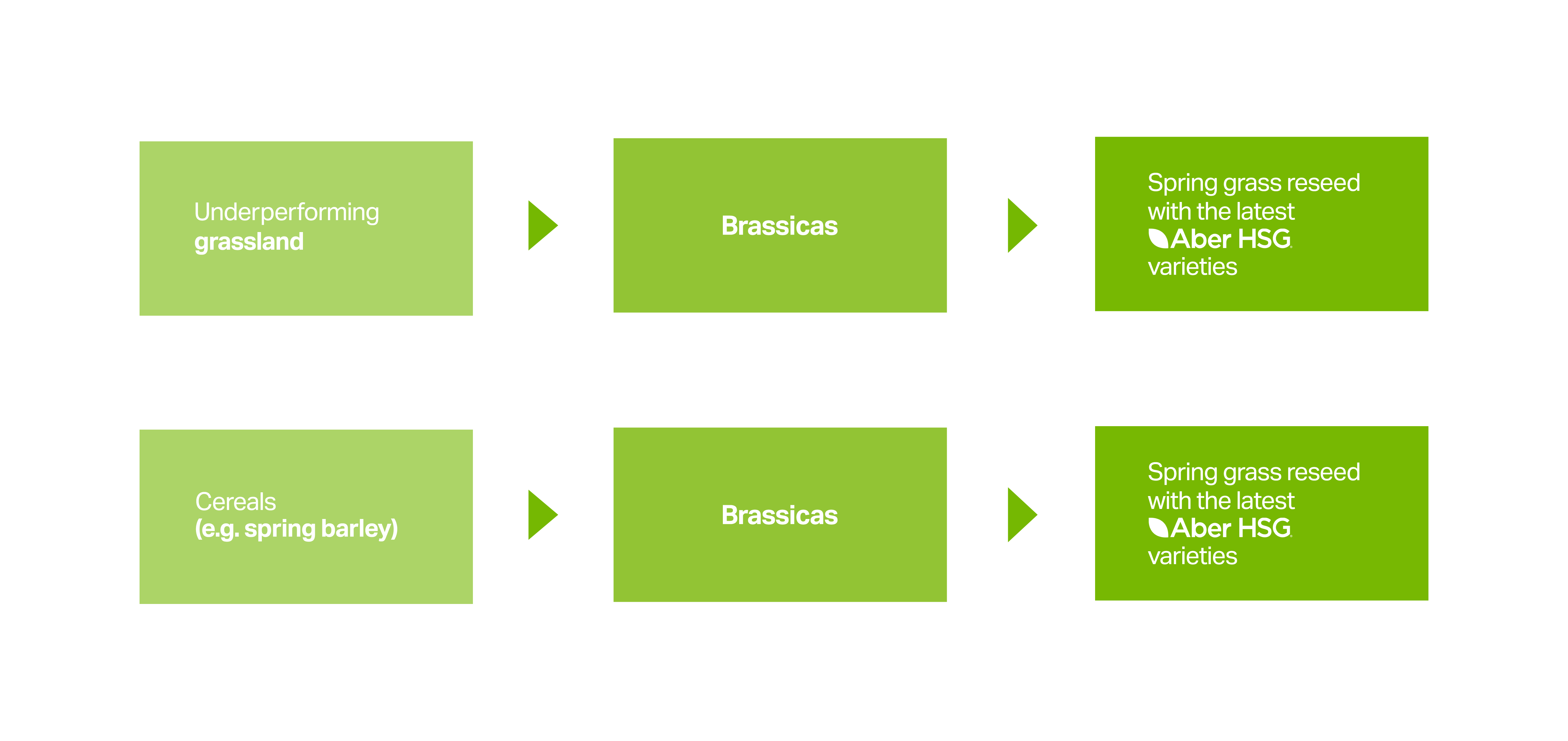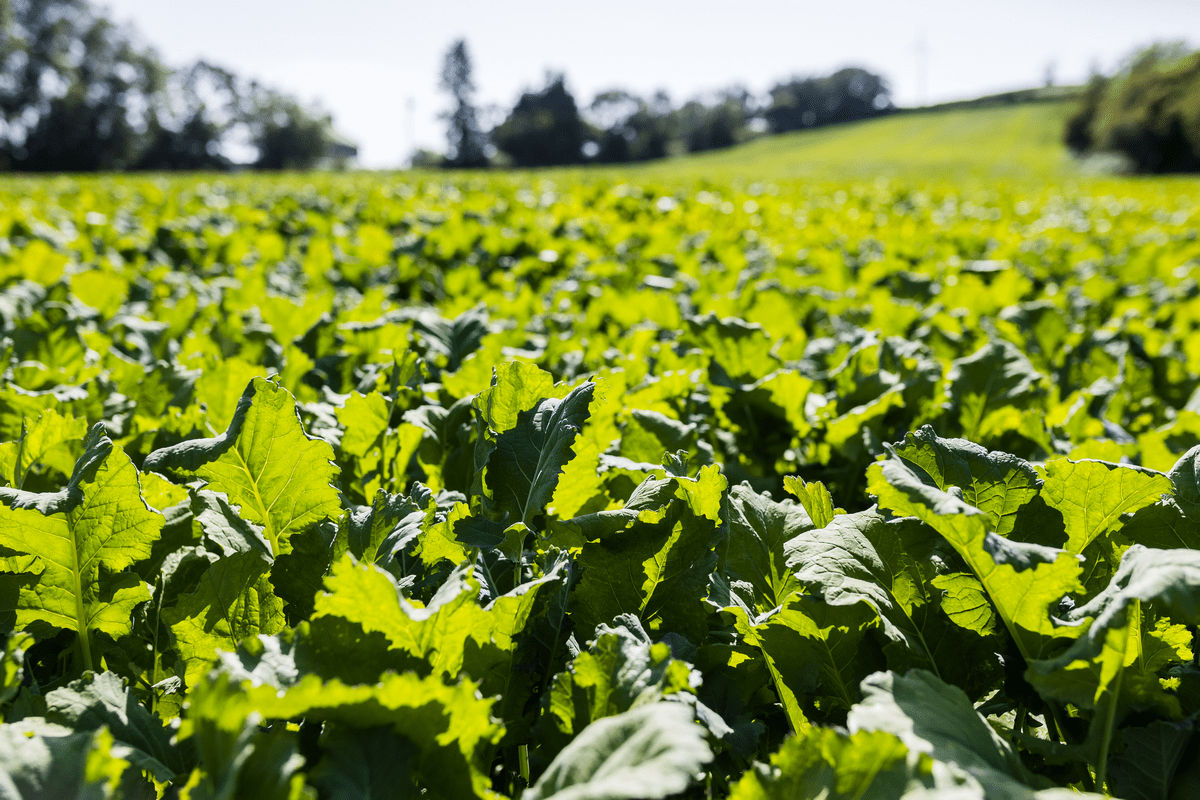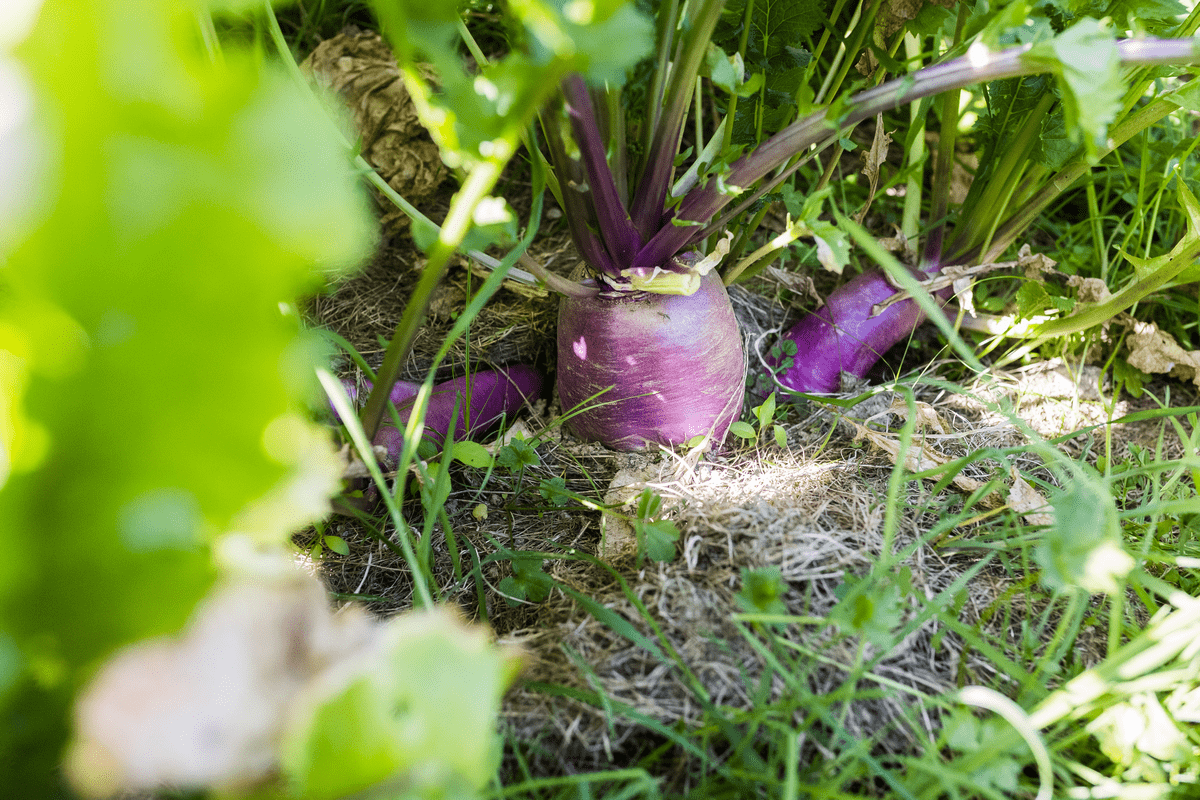Brassicas cover a range of crops giving multiple forage options. This flexibility and the variety of planting dates make brassica cover crops ideal for crop rotations and grassland renewal plans.
Able to be grazed through winter, they’re cost-effective and climate smart, reducing the need for bought-in feed and keeping the ground covered to prevent carbon loss.
Brassicas in a crop rotation
Versatile and fast-growing modern varieties mean brassicas have a place in many cropping situations. By establishing where your forage gaps lie and what will follow brassicas in your crop rotation, you can decide which crop best fits your requirements.
The most common uses of brassicas within a rotation are as follows:

Hybrid brassica varieties
If your aim is to renew underperforming grassland, sow a hybrid brassica such as Redstart or Swift after first cut silage and manage it over the winter before reseeding a new grass ley in spring.
These hybrid varieties combine the fast growth of forage rape with some of kale’s winter hardiness, producing a high protein, high energy feed with good potential for regrowth and multiple grazings. A crop of hybrid brassicas is ready for a first grazing in just 12 to 14 weeks.
Maris Kestrel kale
Maris Kestrel kale is sown from May until the end of June and can also be effective in a crop rotation before a grass reseed.
Earlier sown Maris Kestrel is particularly high yielding with a good leaf-to-stem ratio and digestibility to help overcome grass shortages in late summer or provides a high-quality winter feed from a later planting.
Triumph swede
Triumph swede offers similar benefits to kale, but more commonly used to feed sheep where the taller-standing kale suits cattle. Also sown in May and June, Triumph swede produces a high-yielding, winter-hardy crop providing a very high-energy feed for outwintering ewes.
All these brassicas serve as a valuable break crop before pasture renewal because they provide a period to control serious weed problems, leaving the cleaner seedbed essential for a successful grass reseed.
Stubble turnips
Similarly, if you are looking to bring arable land into grass, sow stubble turnips such as Vollenda after harvesting a cereal such as barley and before reseeding with grass the following spring.
This allows for a period of weed control and adds organic manure to the soil.
Climate smart benefits of brassicas in a crop rotation
While providing a source of high-quality grazing from June through to February or March within crop rotations, brassicas also help restore soil health.
Once sown, brassicas cover the soil quickly, reducing the risk of soil erosion over the winter period.
In both arable and grazing situations, their dense root structures help improve soil structure to support the subsequent yield of whatever follows a brassica in a crop rotation.
They also increase the soil’s organic matter and nutrient levels for the following crop and provide the added benefits of animal manure during grazing.
Learn more about establishing, managing and feeding brassicas in our Brassica Management Guide.
Ask an expert about using brassicas in a crop rotation
Contact our experts about which brassica forage crops are suitable for your rotation.
